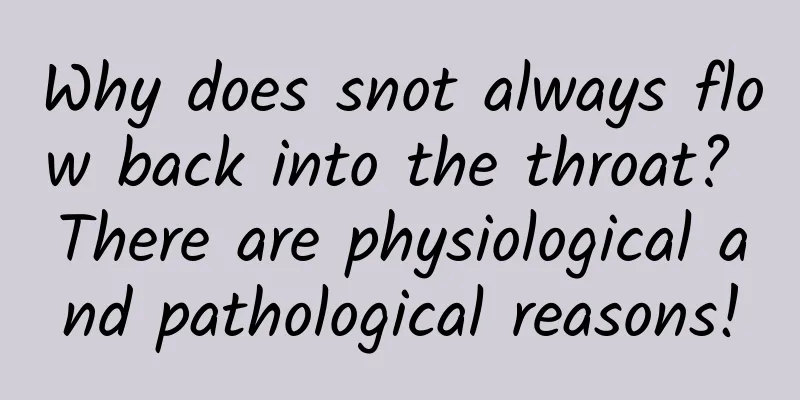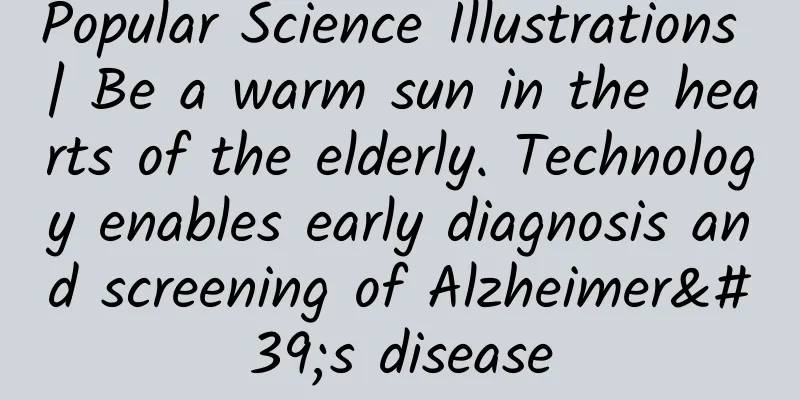Why does snot always flow back into the throat? There are physiological and pathological reasons!

|
Author: Dai Jinsheng, attending physician, Beijing Chaoyang Hospital, Capital Medical University Reviewer: Zhang Juan, Chief Physician, Beijing Chaoyang Hospital, Capital Medical University In daily life, our nasal cavity secretes a large amount of secretions, or nasal mucus, every day. These secretions play a vital role in keeping the respiratory tract moist. Most of them flow into the pharynx and are swallowed into the stomach. We will not feel this phenomenon obviously, so we can call it physiological postnasal drip. If this backflow is caused by some nasal or sinus disease and causes discomfort, we call this pathological postnasal drip postnasal drip. Figure 1 Original copyright image, no permission to reprint Under normal circumstances, the cilia in the nasal cavity have the characteristic of swinging backwards, and their surface is covered with a layer of mucus called the mucus blanket. This mucus blanket can effectively absorb and capture pollutant particles in the air. Then, under the regular swinging of the cilia, these pollutants are gradually pushed to the pharyngeal cavity. This process reflects the self-cleaning function of the nasal cavity. When the nasal cavity is healthy and the self-cleaning function is normal, people usually do not notice the secretions flowing out of the posterior nostril, that is, there will be no postnasal drip. However, as we age, the nasal cavity's self-cleaning ability gradually weakens, and the flow of nasal secretions to the throat may be felt, causing discomfort. This feeling is particularly evident when eating and talking, and we often feel that there is a buildup of secretions in the throat. In addition, aging can lead to a decrease in cell secretion function, and dry air causes the mucus blanket to become less humid and less fluid, so the nasopharynx often becomes dry, further exacerbating the feeling of a foreign body in the throat. At the same time, the nasal mucosa may also atrophy with age, the nasal conchae become smaller, and atrophic rhinitis may form, causing excessive nasal ventilation, further exacerbating the dryness of the nasopharynx and the illusion of increased throat secretions. On the other hand, a narrow nasal cavity can also cause this problem, common symptoms include snoring and sleep apnea. Due to the narrow upper airway, accelerated respiratory airflow, insufficient heating and humidification, you often feel dry nasal cavity and mouth in the morning, accompanied by the illusion that there is secretion in the back of the nose. In the pathological state, the most common situation is sinusitis, such as ethmoid sinusitis, sphenoid sinusitis or maxillary sinusitis. The opening of the sinus is located in the posterior part of the nasal cavity, at the end of the entire middle nasal meatus or the upper nasal meatus. When the sinus is inflamed, purulent secretions tend to flow to the posterior nasal opening, and postnasal drip is also one of the typical clinical manifestations of sinusitis. Figure 2 Original copyright image, no permission to reprint For very young children, since they have not yet mastered the technique of blowing their nose, nasal secretions tend to flow naturally back into the throat. If there is inflammation in the nasal cavity, the amount of secretions will increase abnormally, which may lead to throat diseases. Sometimes these secretions will be swallowed in large quantities, causing digestive tract discomfort. In addition, tumors in the nasopharynx or nasal cavity may not only cause backflow of purulent secretions, but may also be accompanied by bloody secretions. The most common method of diagnosing postnasal drip is nasal endoscopy, which uses direct endoscope to observe the patency of the nasal cavity, whether the nasal concha is atrophied, whether there is a tumor in the nasal cavity, whether there is secretion in the posterior nasal cavity, the nature and amount of the secretion, whether there is bloody secretion, and whether there is dry crust, etc. Second, the specific source of the secretion needs to be determined, such as whether the purulent secretion is caused by the maxillary sinus and the anterior ethmoid sinus behind the middle nasal meatus, or the posterior ethmoid sinus and sphenoid sinus of the superior nasal meatus, or caused by pharyngitis or nasopharyngitis. If necessary, imaging examinations, such as sinus CT, can be performed to determine whether there are problems such as sinusitis or tumors. For excessive secretions, if it is caused by sinusitis, rhinitis, or tumors, the primary disease should be actively treated. If the increase in secretions is due to force majeure factors such as weakened or degraded nasal self-cleaning function, you can take enhanced protective measures, such as drinking more water and rinsing the nasal cavity to keep the nasal cavity moist. In some special environments, wearing a more breathable mask can enhance the heat preservation and moisturizing effect to a certain extent. In addition, if there is obstructive sleep apnea syndrome and the problem of upper airway stenosis, it should be actively corrected and intervened. |
<<: Follow Xiaogu and Nezha to see what to eat as staple food
Recommend
Does fiddle-leaf fig need a deep pot? What kind of flower pot is suitable for fiddle-leaf fig?
Fiddle-leaf fig is a common plant in our lives. I...
What are the treatments for vulvar white spots?
Vulvar leukoplakia is a disease that mainly occur...
What is the best time to have breast augmentation?
In our daily life, what we hear most is about [wh...
What causes vomiting after miscarriage?
Vomiting after miscarriage is a normal physiologi...
What medicine should be used for bacterial vaginitis
If a female friend encounters a gynecological dis...
Can “cervical erosion” actually lead to infertility?
Gynecological diseases seriously threaten women&#...
Is postpartum hemorrhage serious?
I believe many of my friends understand that wome...
How to soak dried oysters? Homemade recipes for dried oysters
Many friends always don't know how to soak an...
Reasons for giving birth earlier than expected
In our lives, many women give birth before the ex...
What are the effective ways to make your breasts bigger?
In today's society, many women are more conce...
Can I eat pomegranates when I am pregnant?
There are many taboos for women after they become...
How long does it take for a girl's swollen and itchy vagina to heal?
The symptoms of swelling and itching in girls'...
How long does hypoxia affect the fetus during pregnancy?
Considering the healthy growth of the fetus, preg...
Malnutrition in this part of women can actually induce cancer
For a long time, there has been severe itching of...
How to get rid of acne marks on forehead
Acne on the face during adolescence has left many...









